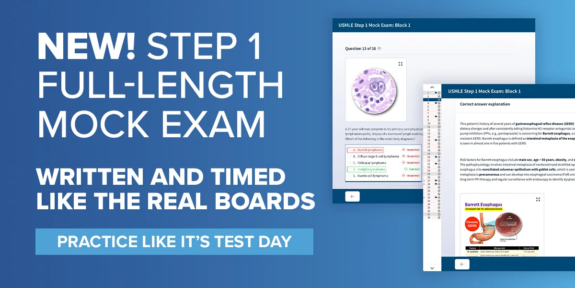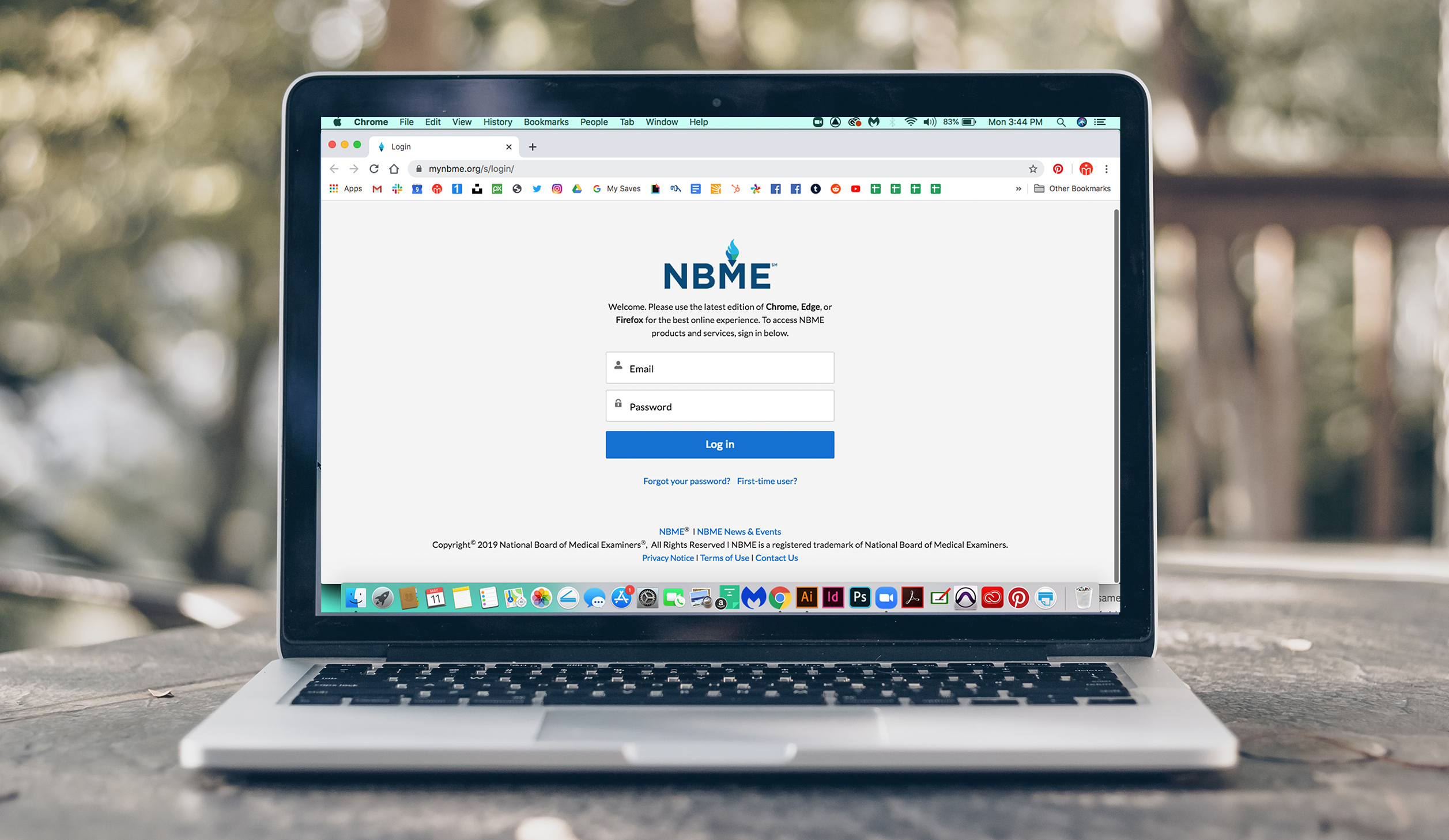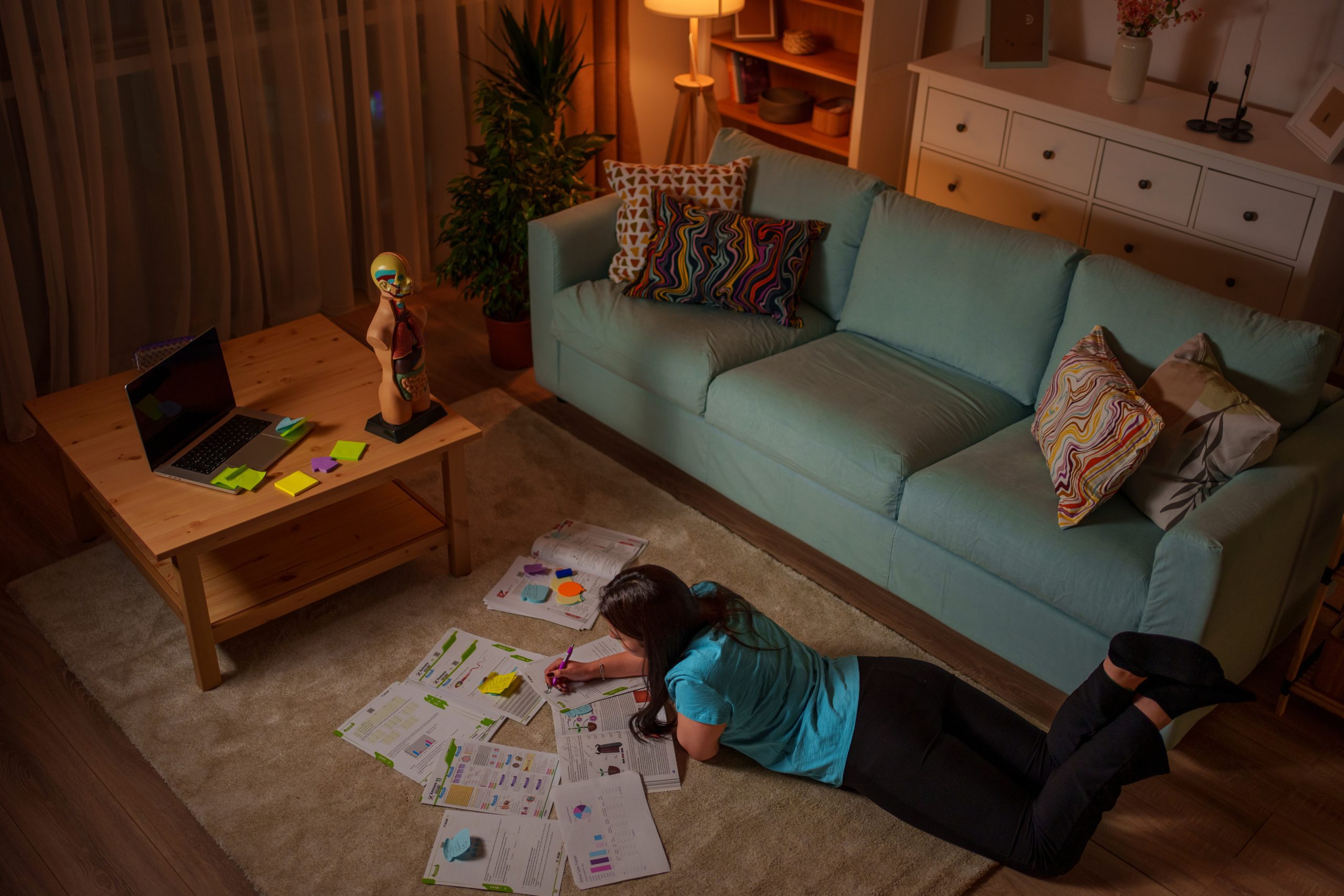So, it’s your final week of Step 1 preparation. Congratulations! Are you wondering what you should do during the last week of studying? One resource I tell my students to use in the final week of Step 1 studying is the NBME Step 1 Free 120 simulation exam. It’s a great way to get ready as the clock winds down and you head into the final stretch!
In this article I’d like to explain what makes the Free 120 for Step 1 such a great study resource, one you should definitely take advantage of.
🗓️ Making your Step 1 study schedule? Check out Blueprint’s Med School Study Planner, the “smart” scheduling tool that will automatically plan out your study resources in just a few clicks!
What is the NBME Free 120?
The NBME Free 120 for Step 1 is a set of 120 questions given by NBME that you can utilize within their web interface. The NBME Free 120 is a free, official practice exam with 120 questions designed to familiarize students with the format and style of the USMLE Step exams, particularly Step 1.
The Free 120 simulates the exact format of the USMLE Step 1 question style and user interface (i.e, how the screen looks, how break time looks, etc). It’s three blocks of 40 questions timed exactly like the USMLE Step 1, gives you the exact same tutorial, and allows you to check your answers once you’ve finished.
The Free 120 for Step 1 was developed by the same team behind the actual USMLE exams, and is often considered to be high-yield and very representative of the actual USMLE Step 1 exam.
One Drawback of the Free 120 for Step 1
The major drawback of this simulation exam is that it only gives you a percentage correct and not a scaled score. Unlike the NBME Self-Assessments (NBME CSAs), the Free 120 does not provide a scaled score or likelihood to pass, so it shouldn’t be used as the sole indicator of readiness for the USMLE. (There’s a reason for this, but we’ll talk about that in a moment.)
3 Ways to Use the NBME Free 120 for Step 1 Prep
Now that we’re somewhat familiar with the NBME Free 120 is, let’s discuss how to use it and why it’s helpful!
1. Use the Free 120 as a test-day simulator 4-5 days before your actual test date.
This is a low-stress practice exam as there is no scaled score and it mimics the breaks, question style, and difficulty of Step 1 to a certain extent. It’s essentially a dry run of what you’ll do on test day and has no psychological impact on your prep, as it doesn’t give you a three-digit score.
One key reason you should take the Free 120 within a few days of your exam is that these questions have a chance to show up on Step 1. Remember, on Step 1, the graders (or computers that grade it) don’t care if you got lucky and picked the correct answer.
2. Utilize the test tutorial to save valuable break time on test day.
This exam mimics the interface you’ll see on test day. This includes the test-taking tutorial and interactive questions.
Seeing the tutorial before your test date will allow you to skip it on the day of the exam, which will save you 15 minutes of break time. Trust me when I say you’ll need all your break time, as it’s very important to break in between each block of 40 questions.
3. Acclimate to Step 1 interactive questions.
The interactive questions in the Free 120 include those where you listen with your stethoscope for a murmur or listen to breath sounds. Knowing how these will look on exam day will lessen your anxiety, as you won’t have to fidget around figuring out how to use these features. Less anxiety is always a good thing on test day!

Done with the Free 120 and looking for more Step 1 practice with questions just like the ones you’ll see on your actual exam? Check out Blueprint’s Step 1 Practice Bundle to get 2 full-length USMLE mock exams!
How is the NBME Free 120 for Step 1 scored?
As mentioned earlier, the Free 120 does not generate a three-digit score. It does give you a percentage correct. Some people have tried to correlate to a Step 1 passing score to percentage correct (more data can be found here). It seems the typical score to pass requires at least 60% of the questions answered correctly.
Anecdotally, I can say that if a student gets a 70% or higher on the NBME Free 120 Step 1, they generally pass Step 1. That’s from a small sample size of about 25-30 students/friends. In terms of actual score, again, there is no exact correlation between your percentage on the NBME Free 120 and your Step 1 three-digit score.
NBME Free 120 Step 1 Question Explanations
To help you make the best of your time with the NBME Free 120, here are explanations for 25 questions. These are the first 25 questions in block 1 of the Free 120:
- A. BMI – For USMLE, a young teenage boy with overweight to obese BMI with knee and hip pain is commonly due to SCFE. Slipped Capital Femoral Epiphysis (SCFE) should be suspected in an overweight or obese adolescent boy presenting with insidious onset of hip, groin, thigh, or knee pain and limp. On physical exam, restricted internal rotation, abduction, and flexion of the hip are classic findings. Pain may be referred to the knee, leading to missed or delayed diagnosis. The most significant risk factor is obesity (BMI >95th percentile), due to increased mechanical stress on the growth plate. SCFE typically affects boys aged 10–16 during periods of rapid growth.
- D. Keratosis Pilaris – The skin findings in the picture and vignette describe a chronic, non-itchy, non-painful rash in a previously healthy teenage girl with multiple erythematous papules, seen in keratosis pilaris – a benign skin condition caused by keratin buildup in hair follicles, leading to rough, small papules. KP appearance is small, rough, flesh-colored or red bumps that are commonly on the posterolateral upper arms, anterior thighs, buttocks and is often asymptomatic but common in children and teens. There are no excoriations, edema, or signs of skin infection.
- B. Increased Hemoglobin Concentration – Increased Hemoglobin Concentration in a 50-year-old male with obstructive sleep apnea (OSA) can be explained by chronic intermittent hypoxia during sleep. This hypoxia stimulates the kidneys to increase erythropoietin (EPO) production, which in turn leads to increased red blood cell production and a higher hemoglobin concentration.
- A. Collagen – The question gives you details about the urinalysis and the kidney biopsy, RBC casts, crescentic glomerulonephritis and linear deposition of IgG, and the pulmonary findings point to Goodpastures syndrome, which is autoimmune disease characterized by anti-glomerular basement membrane (anti-GBM) antibodies targeting type IV collagen in the basement membranes of the kidneys and lungs.
- D. Fusion of the inferior poles of the metanephros during ascent – UTIs are a risk factor for horseshoe kidney, such as in this patient with “one large U shaped kidney.” This originates from the fusion of inferior poles during embryological development, leading to abnormal kidney positioning. This congenital anomaly in which the inferior poles of the metanephros fuse, forming a single U-shaped kidney occurs during weeks 4–6 of gestation and the fused kidney gets trapped under the inferior mesenteric artery (IMA) during its ascent, resulting in low positioning in the abdomen, and can lead to malrotation of the renal collecting system
- E. Induction of cytochrome enzymes – This patient was discharged from the hospital 1 week ago after being treated for nonTB mycobacterium with ciprofloxacin and rifampin. Of note, his Warfarin dosage was doubled, which should result in a much higher INR. However, his INR remained mostly unchanged, meaning that there was increased warfarin metabolism. Rifampin is a potent inducer of the cytochrome P450 (CYP450) enzyme system, which metabolizes warfarin. This induction increases hepatic clearance of warfarin, resulting in reduced anticoagulant effect and an unchanged or even lower INR, even with a higher dose of warfarin. “Rifampin revs up the P450 engine” → speeds up drug metabolism → decreased effect of the med.
- C. HIV infection – This middle-aged man presents with nonspecific viral symptoms including fever, pharyngitis (throat pain), generalized lymphadenopathy (LAD), and tachycardia. The question stem rules out Epstein-Barr virus (EBV) as a cause of mononucleosis-like illness. Additionally, lab findings of anemia, leukopenia, and/or thrombocytopenia further support the diagnosis of acute HIV infection. Suspect acute HIV in a patient with nonspecific viral illness + cytopenias and get a HIV PCR test.
- A. Arteriorvenous nicking – This man has longstanding, uncontrolled hypertension, which can lead to hypertensive retinopathy, visible on fundoscopic (ophthalmologic) exam. A classic finding is arteriovenous (AV) nicking, where the arterioles compress the venules at crossing points due to chronic vascular thickening. This reflects chronic end-organ damage from hypertension.
- D. This patient presents with: Aphasia, sudden-onset right facial weakness with a history of A fib. Together, these findings point toward an acute ischemic stroke, most likely in the left middle cerebral artery (MCA) distribution. The left MCA supplies Broca’s area (inferior frontal gyrus) → expressive (non-fluent) aphasia
- A. Ask the patient how much he is eating and drinking during the holidays – This patient has GERD and takes a PPI. There is concern for Barrett esophagus, which can lead to esophageal cancer. Thus asking about alcohol consumption is required to further assess the risk.
- C. Methionine – This patient presents with neurologic symptoms (e.g., paresthesias, ataxia), along with signs of megaloblastic anemia—a classic presentation of vitamin B12 deficiency. Vitamin B12 is essential for the conversion of homocysteine to methionine, without B12, methionine synthesis is impaired, leading to elevated homocysteine and disruption in methylation reactions, which affects myelin synthesis, thus leading to subacute combined degeneration of the posterior columns and lateral corticospinal tracts.
- B. Inferior IVC – This patient has stage 3 colon cancer, which spreads to the liver and lungs from the hepatic veins to the inferior IVC to the RA and RV in the heart and then the pulmonary system.
- F. Supraoptic nucleus – This patient has central DI, which is evident by the present symptoms and the vasopressin test – in central DI, the body doesn’t produce enough vasopressin, while in nephrogenic DI, the kidneys don’t respond to it. Central DI is caused by decreased production of ADH, which is produced by the supraoptic nucleus.
- C. Increased synthesis of contractile filaments – The EKG findings of tall R waves in V5, V6 indicated LV hypertrophy, which occur with longstanding, uncontrolled HTN, leading to increased synthesis of actin/myosin filaments.
- B. Vitamin A – The symptoms of indigestion leading to fatty stools, weight loss and rash suggest fat absorption, which will also lead to a decreased absorption of fat soluble vitamins A in this case.
- B. 120-140 – confidence interval is calculated as: Sample Statistic ± (Critical Value x Standard Error). In this case, 130 +/- (1.96 x 5) meaning the 95% CI of the TRUE population lower limit is 120.2, and upper limit is 139.8.
- E. Emphysema – For questions with pulmonary function tests, the first step is to analyze the pattern of lung disease from the PFTs: obstructive vs restrictive. Obstructive lung diseases, like COPD and asthma, show reduced airflow, particularly during exhalation, resulting in a lower FEV1/FVC ratio. Restrictive lung diseases, such as interstitial lung disease, show reduced lung volumes, with a normal or increased FEV1/FVC ratio. This patient presents with an obstructive pattern. That information, in addition to age (usually younger onset for asthma), barrel chest and pursed lip breathing point to emphysema. In asthma and emphysema (a form of COPD), the DLCO (diffusing capacity of the lungs for carbon monoxide) test results can help distinguish between the two conditions. Generally, asthma tends to show a normal or even elevated DLCO, while emphysema is typically associated with a decreased DLCO.
- D. Less chance of a Type II error – Imagine a medical test for a disease. A type II error would mean the test incorrectly shows a healthy person as disease-free when they actually have the disease. A type II error, also known as a false negative, occurs when a false null hypothesis is accepted. If investigators recruit more participants in a study, then they decrease the chance of type 2 errors. Essentially, increasing sampling size decreases type 2 errors.
- B. Epithelial cadherins – E-cadherin is a key component of adherens junctions and helps regulate cell growth, preventing uncontrolled proliferation by initiating contact inhibition. This is an elderly patient with bloating and early satiety and histography suggestive of gastric cancer. A decrease of E-Cadherin is common in cancer metastasis as the breakdown or dysfunction of E-cadherin can disrupt contact inhibition, contributing to uncontrolled cell proliferation.
- D. Increased fasting insulin – This middle aged woman likely has insulin resistance, given her high fasting sugar and elevated BMI. In both metabolic syndrome and prediabetes, insulin resistance is a common feature, leading to elevated insulin levels initially as the body tries to compensate for the reduced effectiveness of insulin. At first, the pancreas produces more insulin to overcome this resistance, but over time, it can become exhausted, resulting in lower insulin levels
- C. W to Z – This patient has symptoms and EKG findings suggestive of a STEMI. A STEMI damages the heart muscle, reducing its ability to pump effectively, which directly impacts both CO and EDV. The transition from W to Z represents a larger EDV and decreased CO seen initially after the onset of pain.
- A. Bipolar disorder, manic, with psychotic features – Bipolar disorder with psychotic features, particularly during manic episodes, involves experiencing a loss of contact with reality, including hallucinations and delusions, alongside the typical manic symptoms of elevated mood and energy. These can include hallucinations (seeing, hearing, or feeling things that aren’t there) and delusions (false beliefs). For example, a person experiencing mania might have delusions of grandeur, believing they are exceptionally important as in this patient who is in contact with God and President and the White House.
- D. Disclosing the most important information so that it can be understood as fully as possible – Physicians have a responsibility to disclose important information to patients in a way that is easily understood and enables them to make informed decisions about their healthcare. It is important that the information is disclosed in a way that the most pivotal piece of information is understood as best as possible.
- B. Conversion of testosterone to dihydrotestosterone – this elderly patient has BPH, with his symptoms of urinary frequency and diffusely enlarged, non tender, firm prostate. DHT (dihydrotestosterone) and BPH (benign prostatic hyperplasia) are closely linked, with DHT playing a significant role in the development and progression of BPH. BPH is a condition where the prostate gland enlarges, causing urinary problems. DHT, a potent androgen derived from testosterone, is crucial for prostate growth and development, both in normal and abnormal prostate growth.
- B – Decreased Fremitus, hyperresonant percussion, decreased breath sounds – This patient has a PNX pneumothorax from the stab wound. Findings of a pneumothorax include tachycardia, tachypnea and a shifted trachea to the opposite side. Breath sounds are diminished or absent on the affected side due to the air in the pleural space interfering with sound transmission. Percussion over the affected area will produce a hyper-resonant sound, which is a hollow, booming sound, due to the air in the pleural space. Tactile fremitus, the vibration felt on the chest wall when a patient speaks, will be decreased or absent on the affected side due to the air blocking the transmission of vibrations.
Further Reading
We hope this post helped you make sense of the NBME Free 120 and how to use it for Step 1 prep! For more Step 1 tips, check out these other posts on the blog:
- How Hard Is Step 1 Now That It’s Pass/Fail?
- The Step 1 Pass Rate Is Decreasing: How to Make Sure You’ll Pass
- When to Take USMLE Step 1: A Data-Driven View
Originally published May 2020 / Updated July 2025
Updated by Dr. Mike Ren





